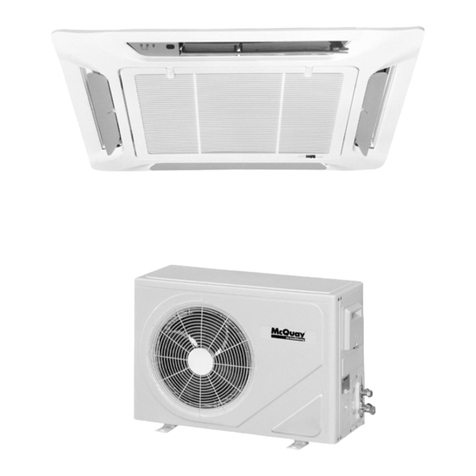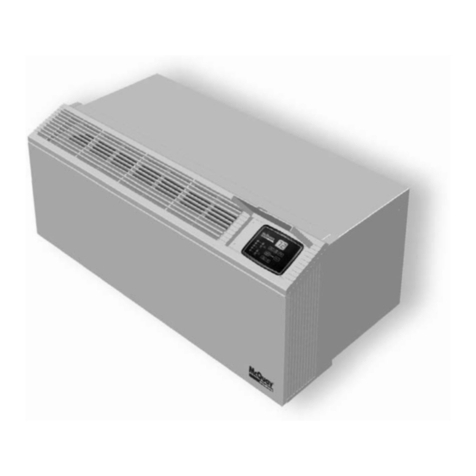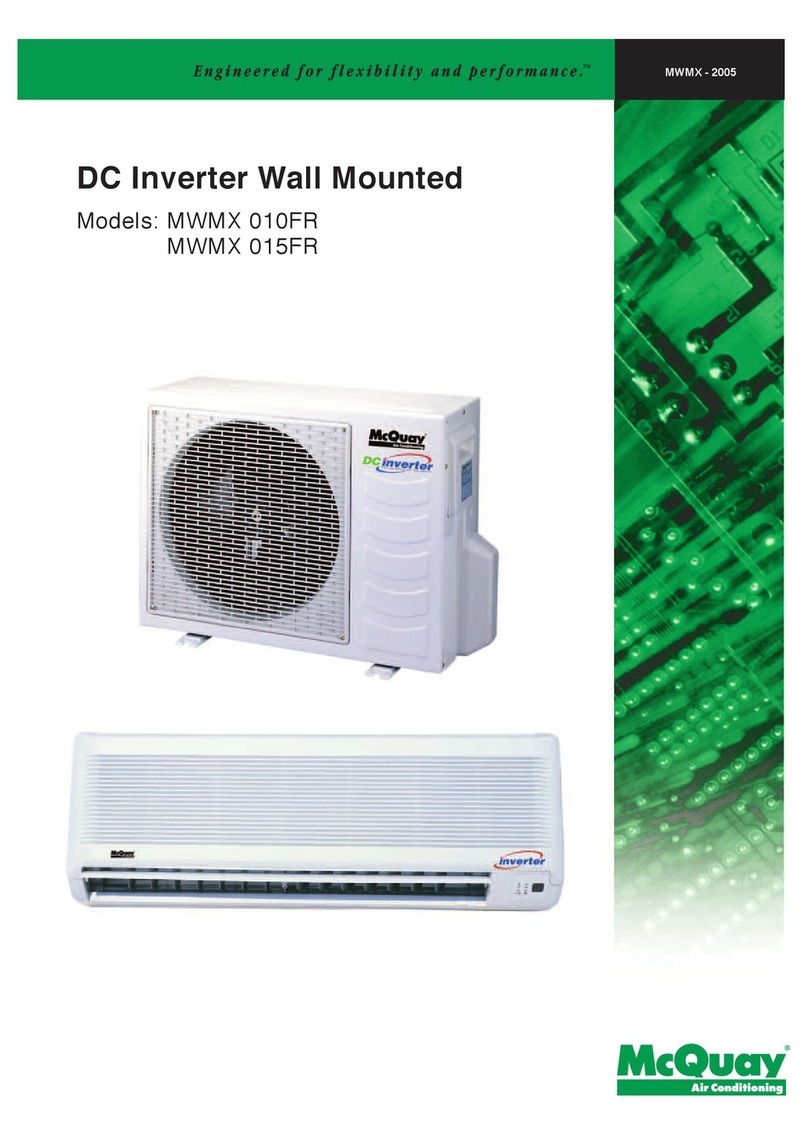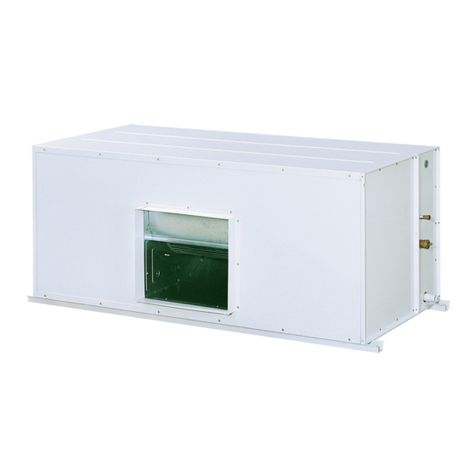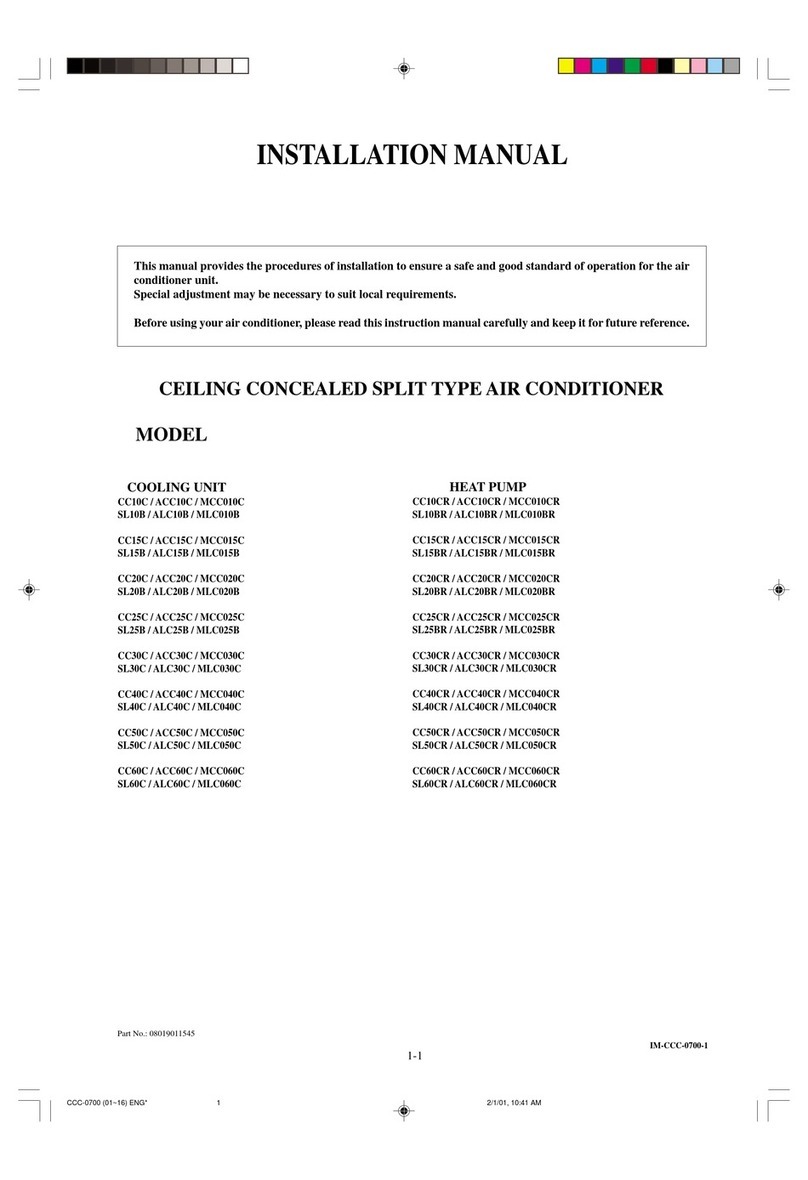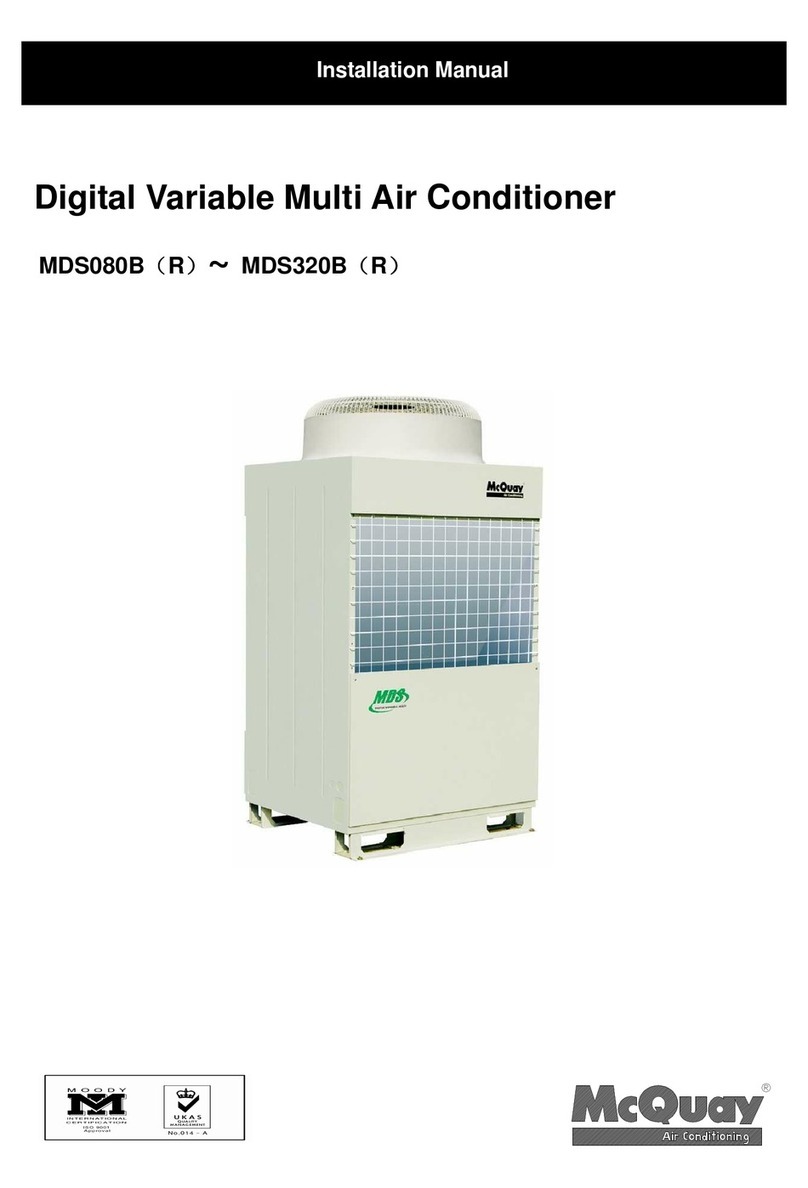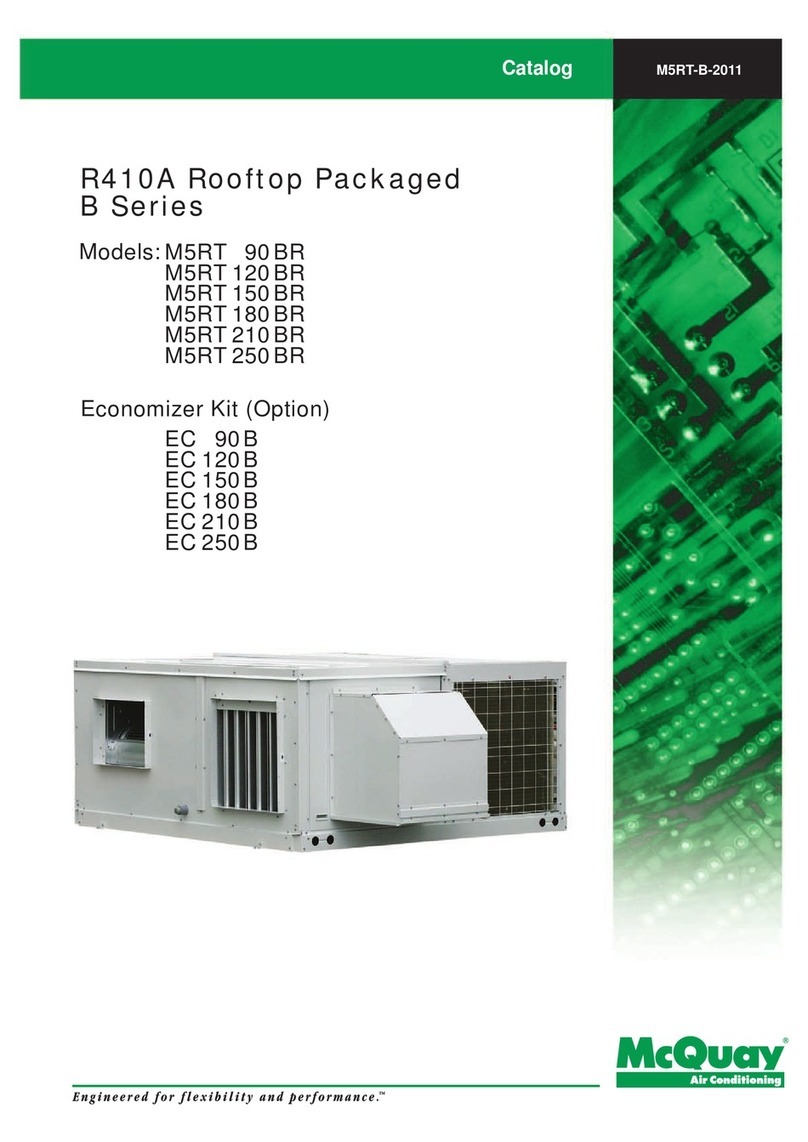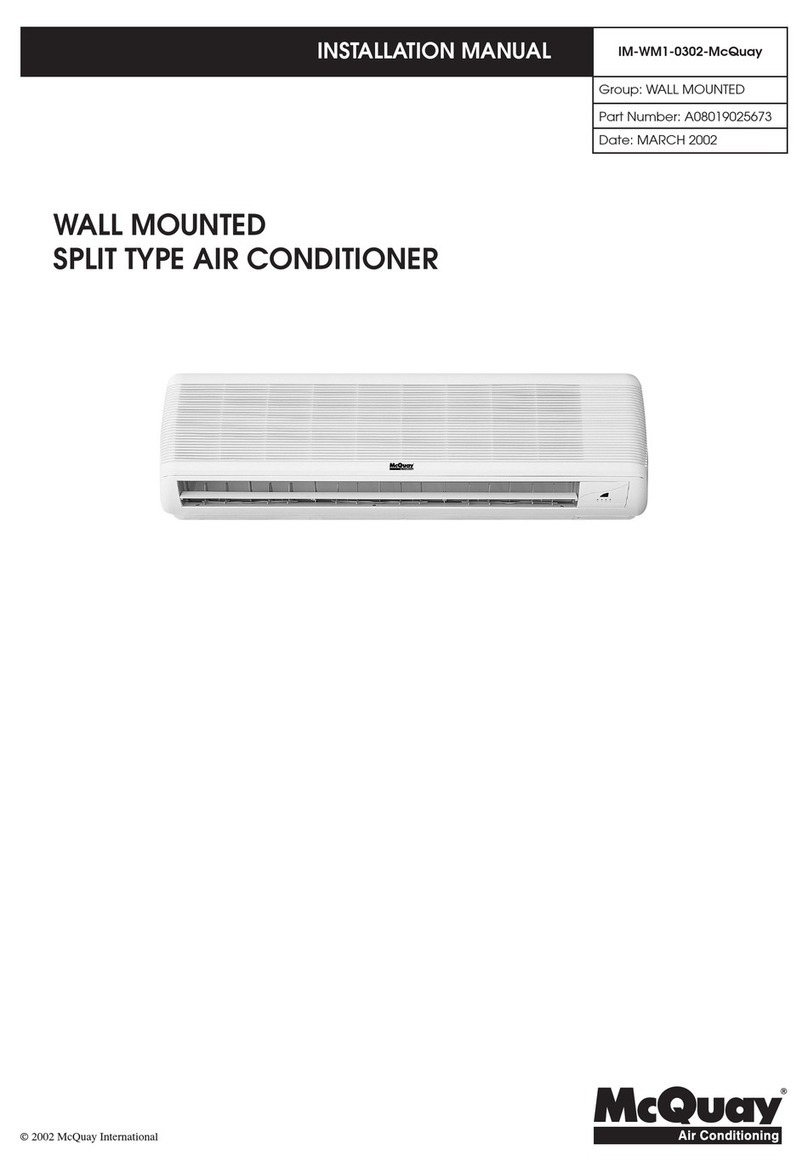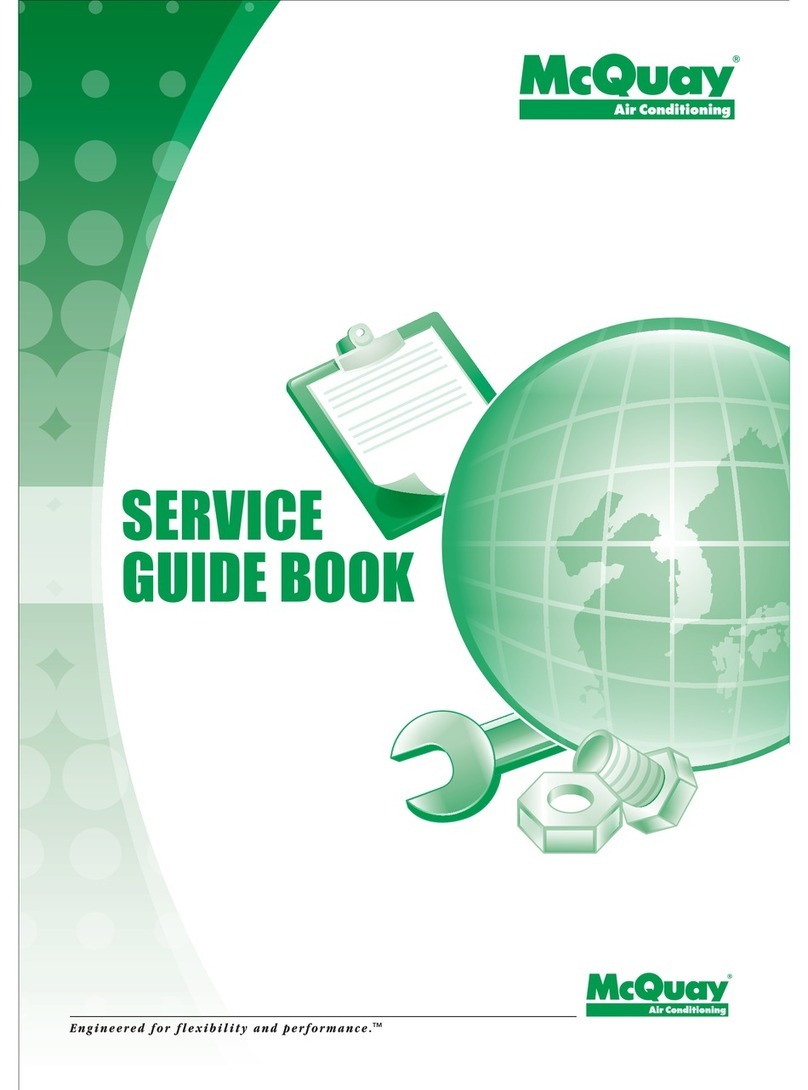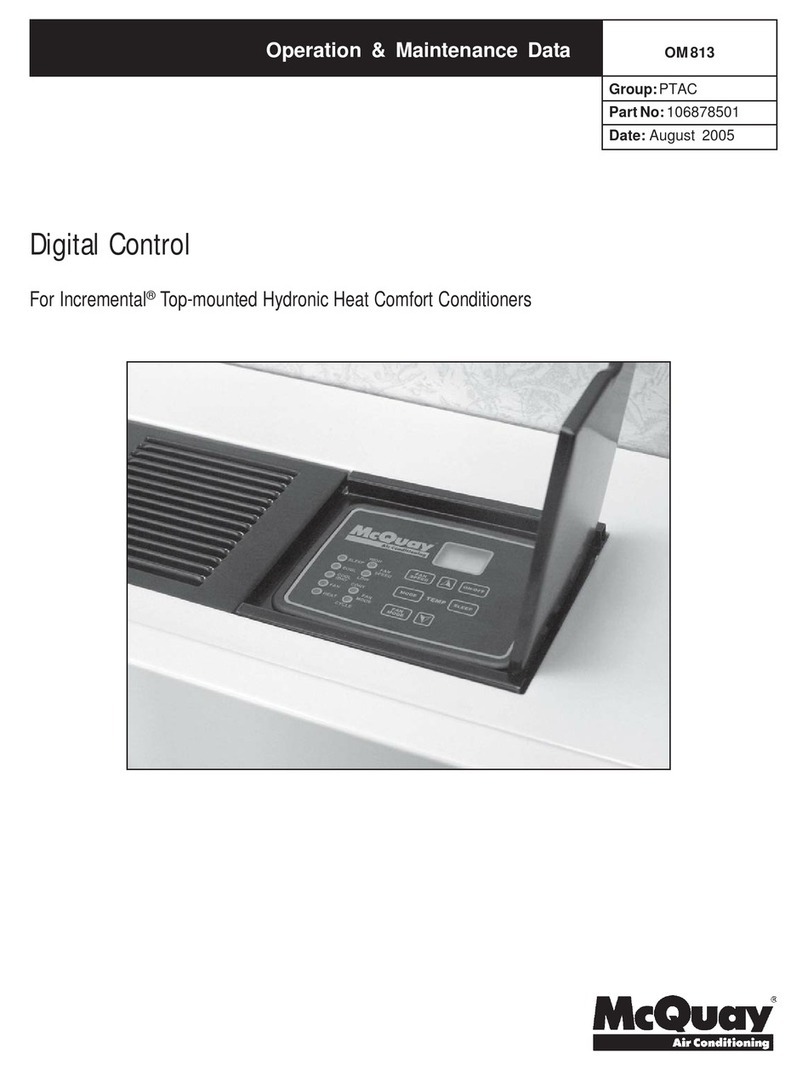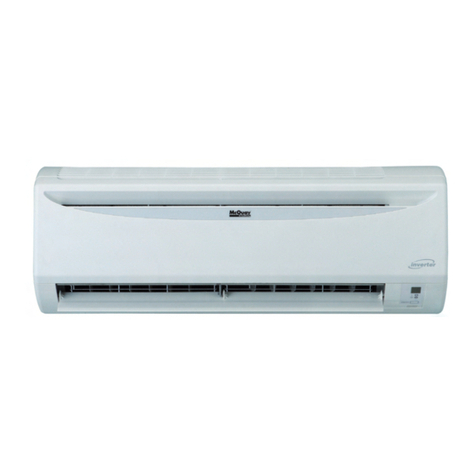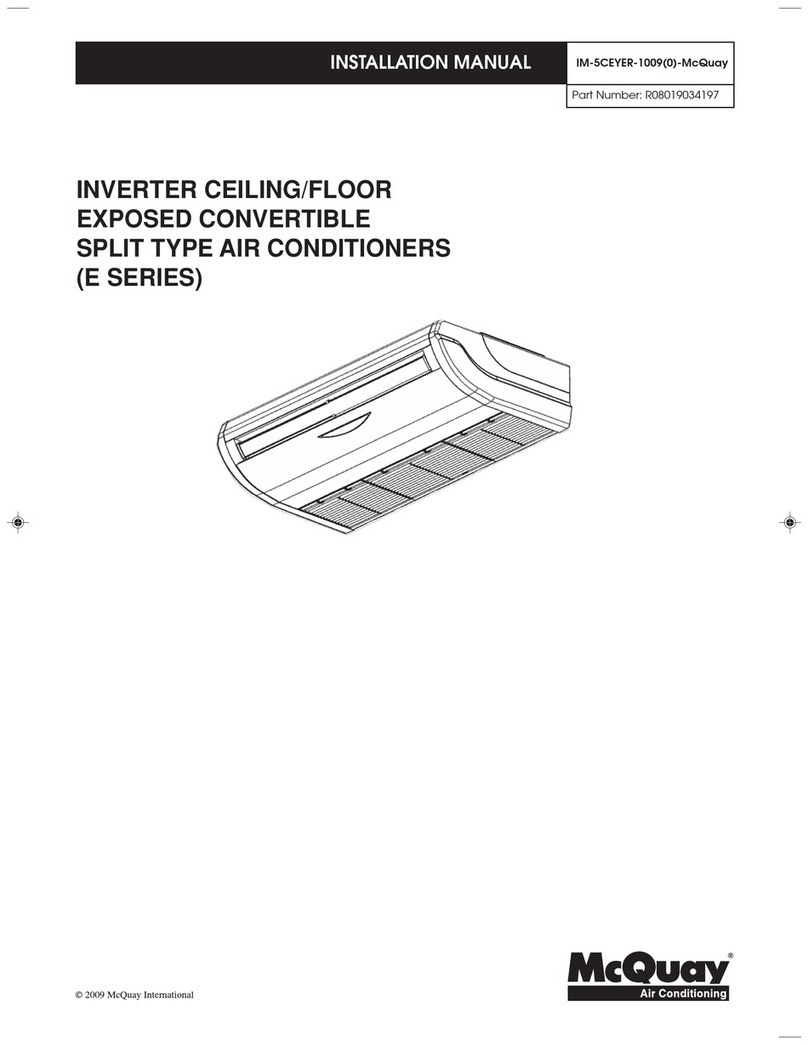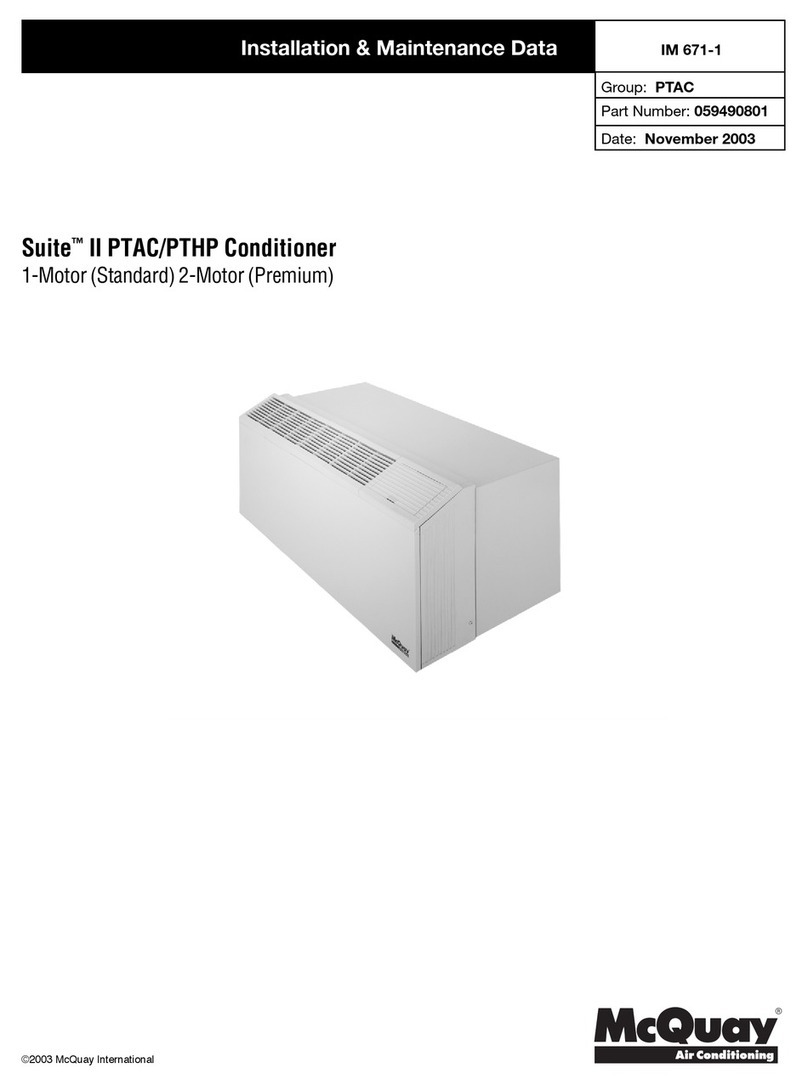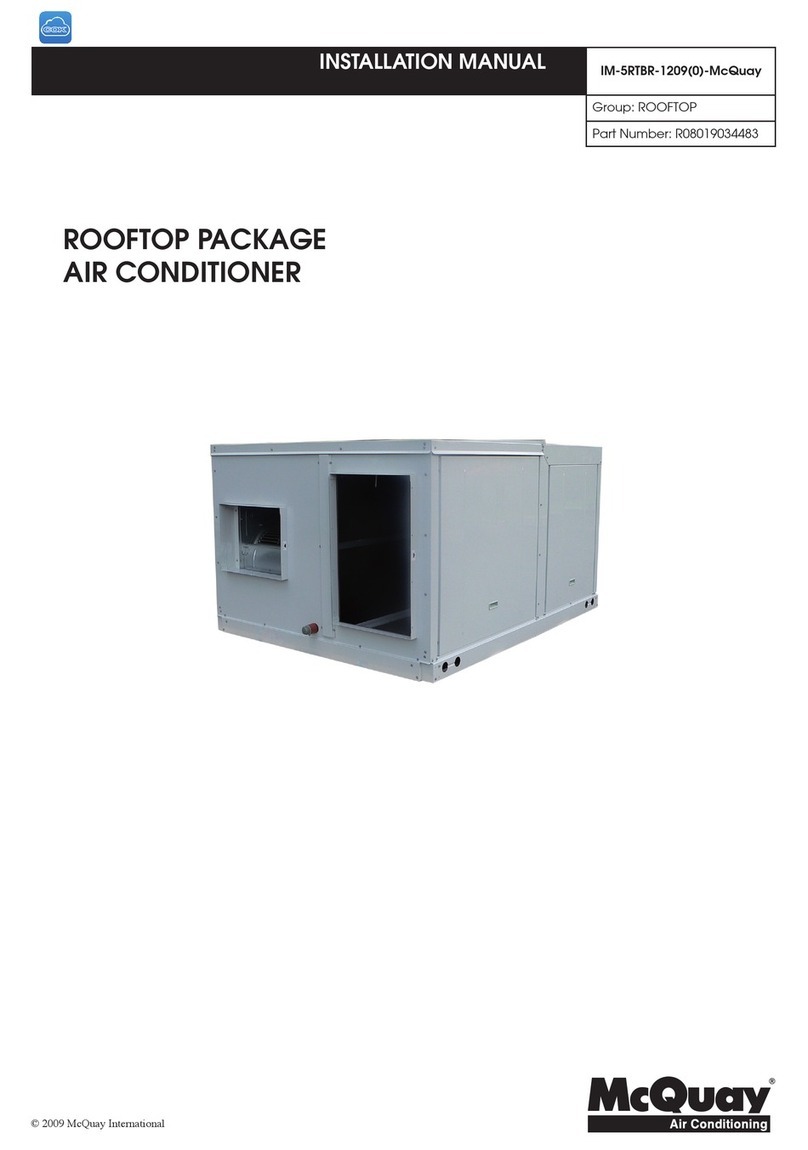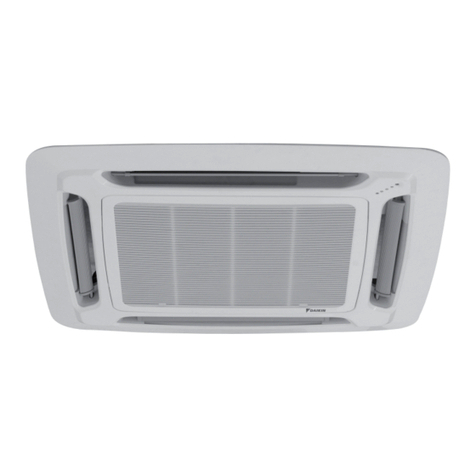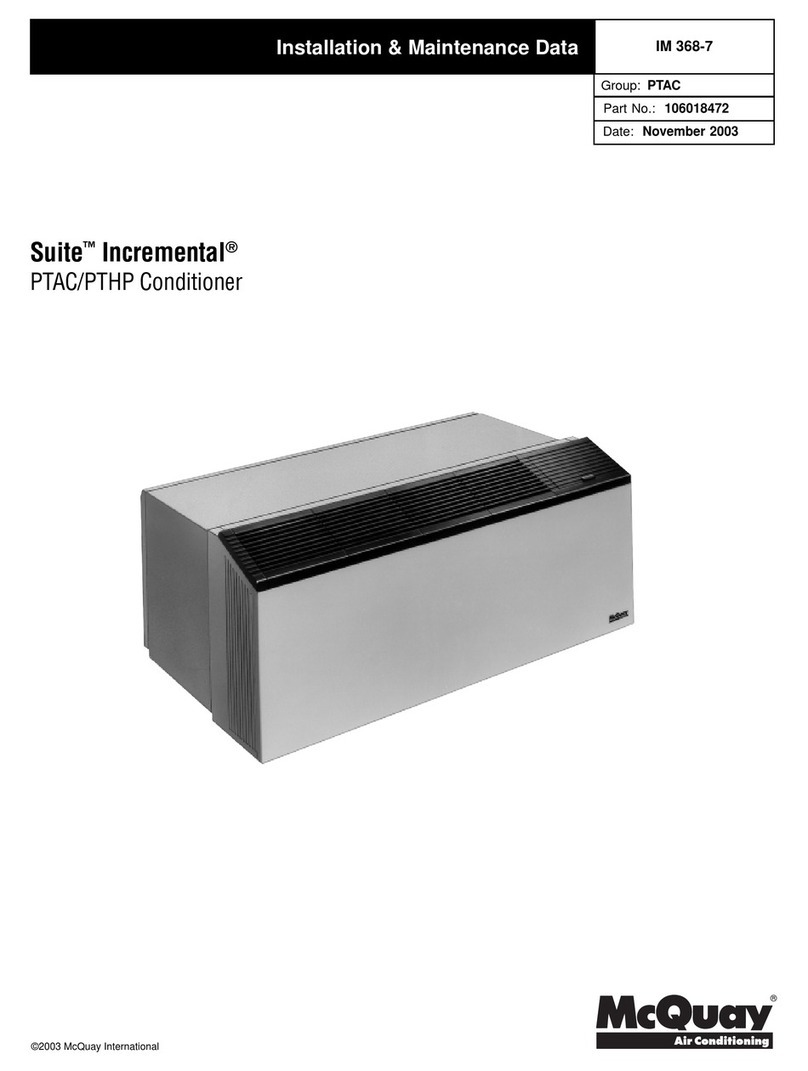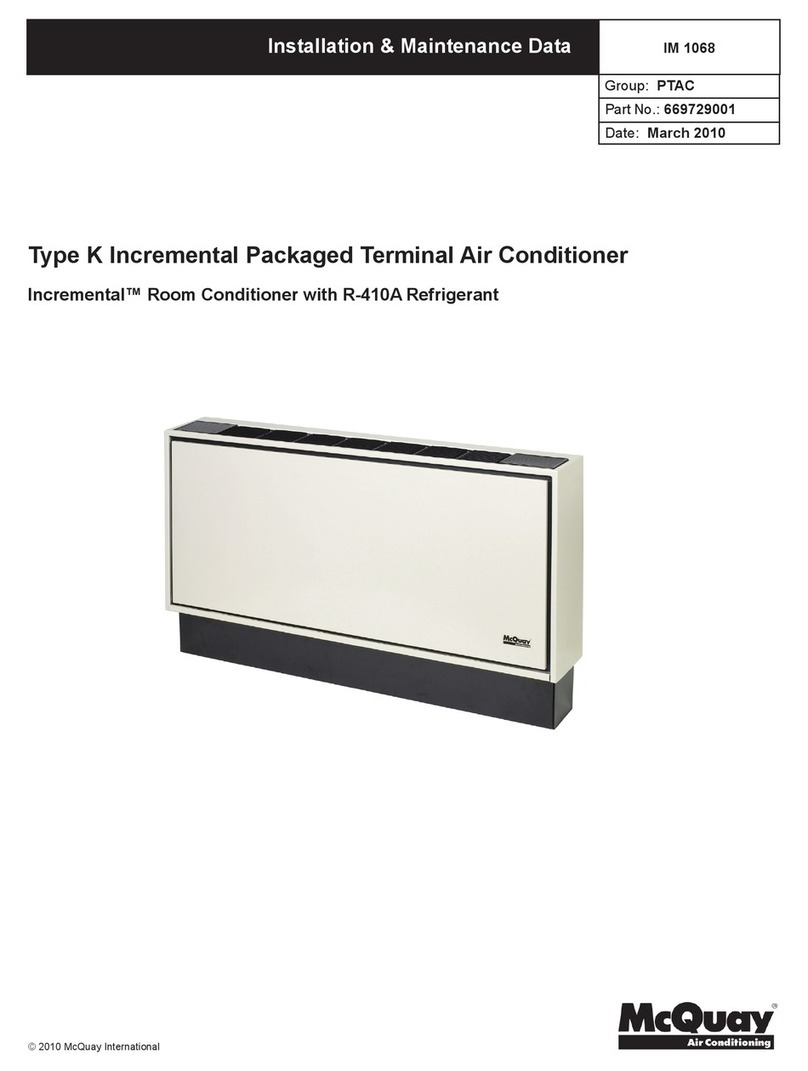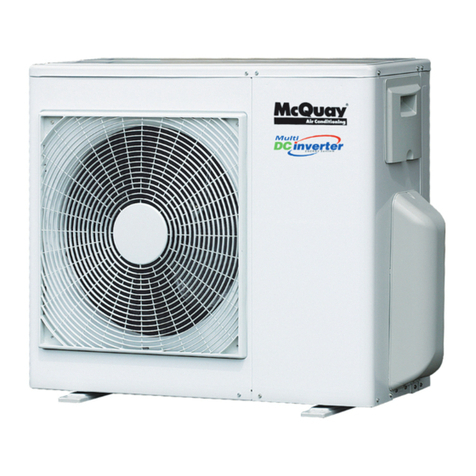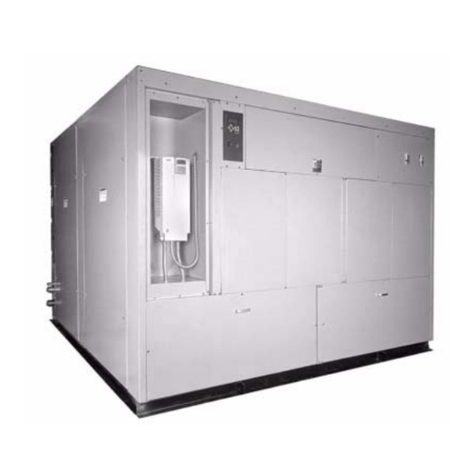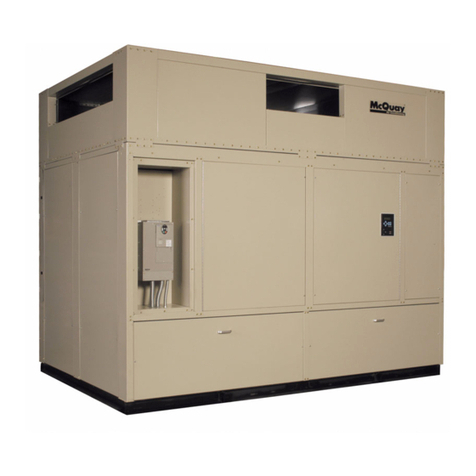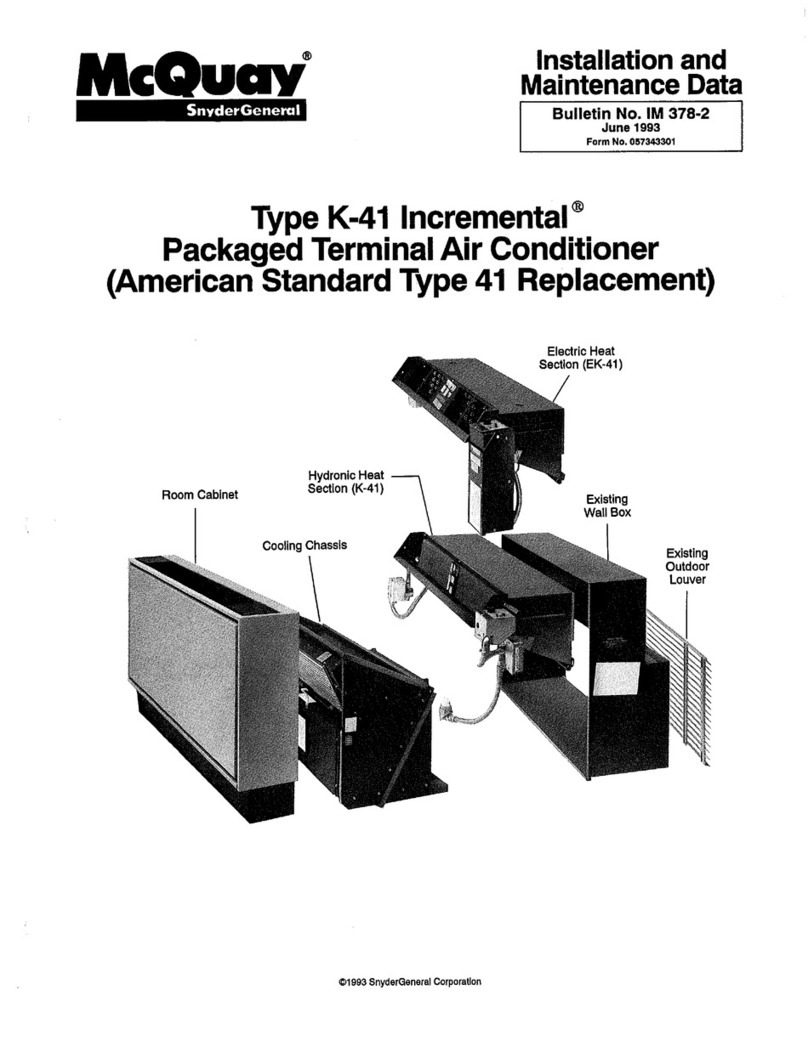IM 865 3
Introduction
This manual contains the installation and operating instruc-
tions for your packaged rooftop unit. There are a few precau-
tions that should be taken to derive maximum satisfaction
from it. Improper installation can result in unsatisfactory oper-
ation or dangerous conditions.
Read this manual and any instructions packaged with separate
equipment required to make up the system prior to installation.
Give this manual to the owner and explain its provisions. The
owner should retain this manual for future reference.
Checking Product Received
Upon receiving the unit, inspect it for any damage from ship-
ment. Claims for damage, either shipping or concealed, should
be filed immediately with the shipping company. Check the
unit model number, electrical characteristics, and accessories
to determine if they are correct.
Equipment Protection From The
Environment
The metal parts of this unit may be subject to rust or deteriora-
tion in adverse environmental conditions. This oxidation could
shorten the equipment’s useful life. Salt spray, fog or mist in
seacoast areas, sulphur or chlorine from lawn watering sys-
tems, and various chemical contaminants from industries such
as paper mills and petroleum refineries are especially corro-
sive.
If the unit is to be installed in an area where contaminants
are likely to be a problem, special attention should be
given to the equipment location and exposure.
1Avoid having lawn sprinkler heads spray directly on the
unit cabinet.
2In coastal areas, locate the unit on the side of the building
away from the waterfront.
3Shielding provided by a fence or shrubs may give some
protection.
Regular maintenance will reduce the buildup of contami-
nents and help to protect the unit’s finish.
1Frequent washing of the cabinet, fan blade and coil with
fresh water will remove most of the salt or other contami-
nants that build up on the unit.
2Regular cleaning and waxing of the cabinet with a good
automobile polish will provide some protection.
3A good liquid cleaner may be used several times a year to
remove matter that will not wash off with water.
Several different types of protective coatings are offered in
some areas. These coatings may provide some benefit, but the
effectiveness of such coating materials cannot be verified by
the equipment manufacturer.
The best protection is frequent cleaning, maintenance and
minimal exposure to contaminants.
Recognize this symbol as an indication of
Important Safety Information!
!
The manufacturer’s warranty does not cover any damage or
defect to the air conditioner caused by the attachment or
use of any components, accessories or devices (other than
those authorized by the manufacturer) into, onto or in con-
junction with the air conditioner. You should be aware that
the use of unauthorized components, accessories or
devices may adversely affect the operation of the air condi-
tioner and may also endanger life and property. The manu-
facturer disclaims any responsibility for such loss or injury
resulting from the use of such unauthorized components,
accessories or devices.
▲▲DANGER
!
Proposition 65: This unit contains fiberglass insulation.
Respirable particles of fiberglass are known to the state of
California to cause cancer.
▲▲WARNING
!
Disconnect all power to the unit before starting mainte-
nance. Failure to do so can result in severe electrical shock
or death.
▲▲DANGER
!
